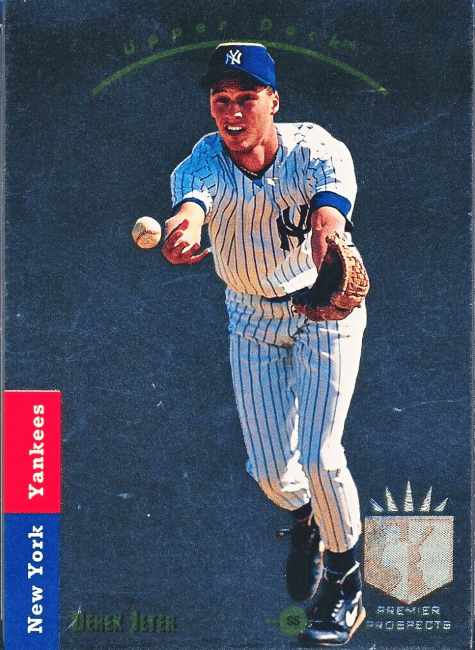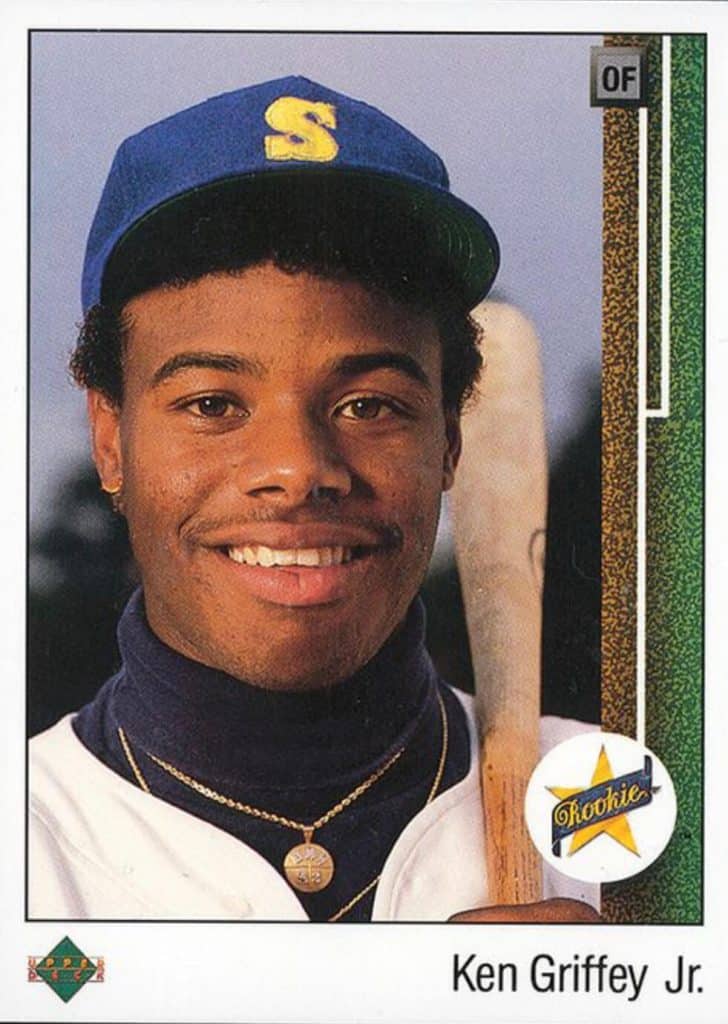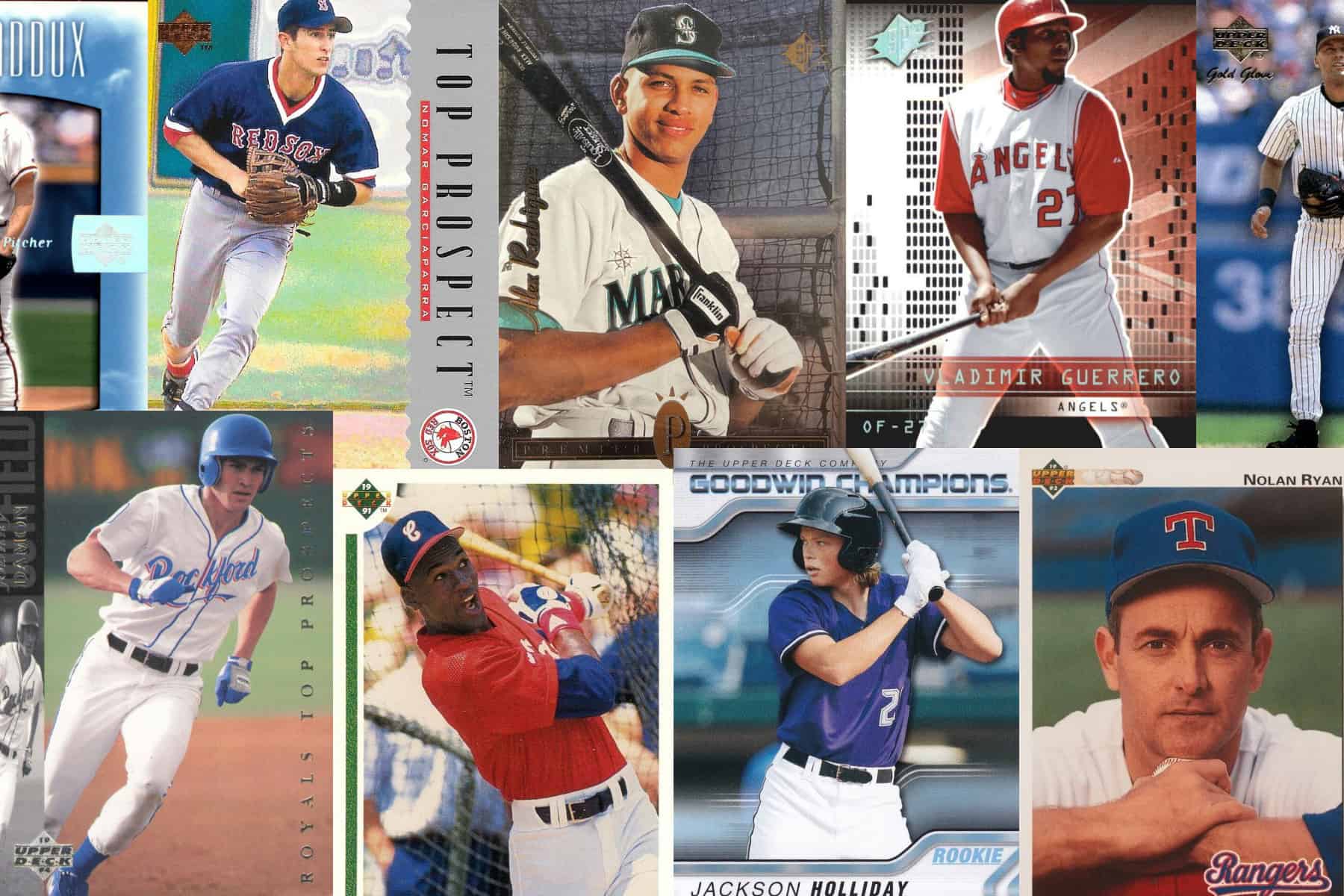In the late 1980s, a revolution was brewing in the world of baseball cards. Enter Upper Deck baseball cards, a company founded on the belief that collectors deserved better. Their first foray, a set of baseball cards boasting superior quality and innovative design, shook the industry.
Upper Deck’s commitment to excellence extended beyond aesthetics, pioneering authentication processes and expanding into other sports. This journey, filled with both triumphs and challenges, has cemented Upper Deck’s place as a cornerstone of the collectibles landscape.
History of Upper Deck

The story of Upper Deck begins with Paul Sumner, a printing salesman who envisioned a premium trading card experience. Dissatisfied with the quality and design of existing cards, Sumner saw an opportunity to create something better.
Upper Deck officially entered the scene in 1989 with its inaugural baseball card set. The cards boasted superior quality, featuring glossy photos, innovative designs, and thicker card stock compared to competitors. This focus on quality, along with the inclusion of holographic numbering and limited edition inserts, resonated with collectors and fueled the company’s rapid success. Their cards consistently received critical acclaim.
In 2005, Upper Deck saw an opportunity to expand its reach within the trading card market through the acquisition of its competitor, Fleer. Facing financial difficulties, Fleer filed for bankruptcy and subsequently auctioned off its assets. Upper Deck emerged victorious, acquiring Fleer’s brand name, intellectual property, and die-cast toy business for a sum of $6.1 million.
This strategic move allowed Upper Deck to diversify its product portfolio by incorporating the Fleer brand and potentially capturing a wider audience within the trading card landscape. However, it’s important to note that while Upper Deck acquired the Fleer name, they did not secure licensing rights.
Famous Upper Deck Baseball Cards
1989 Upper Deck Ken Griffey, Jr. #1

Upper Deck’s very first baseball card, the 1989 Upper Deck Ken Griffey, Jr. #1, endures as one of the most famous cards of the modern era. The card perfectly captured the excitement surrounding the young phenom. Griffey’s contagious smile, frozen in action on glossy card stock, resonated with collectors of all ages. Coupled with Upper Deck’s innovative design and superior quality, the card quickly became a coveted symbol of the hobby’s newfound prestige.
Today, a PSA 10 Griffey rookie can sell for around $2,000. Beyond its monetary worth, the card became a cultural touchstone, representing not just a player, but a new era in card collecting.
Other Famous Upper Deck Baseball Cards
- 1990 Upper Deck Heroes Autograph Reggie Jackson #9: Now it seems normal to find autographed cards in packs but, in 1990, it had never happened before. Upper Deck had Jackson sign 2,500 and put them in random packs, dubbing it “the chase.”
- 1991 Upper Deck Michael Jordan #SP1: What do you get when you take the greatest basketball player of all time, put him on a baseball field, and ask him to excel? You got the Michael Jordan / Chicago White Sox experiment of 1994, but the beginnings of the experiment were captured by Upper Deck in 1991.
- 1993 Upper Deck SP Derek Jeter #279 (RC): Jeter had several rookie cards in 1993, but this is one of the most sought-after. The card sells for thousands in graded, gem-mint condition.
- 2001 Upper Deck Ichiro Suzuki #271 (RC): Ichiro entered MLB to much fanfare and he didn’t disappoint. His Upper Deck rookie card captures the follow-through from that famous swing.
Upper Deck Baseball Card Licensing

Upper Deck baseball cards were dealt a major blow when the company lost their licensing agreement with Major League Baseball (MLB) for the production of baseball trading cards. This shift occurred in 2009 when MLB granted exclusive rights to produce MLB-branded cards to Topps.
This change significantly impacted Upper Deck’s baseball card offerings. They can no longer utilize team logos, trademarks, or other official MLB imagery on their cards. However, they retained the right to include individual player likenesses through an agreement with the Major League Baseball Players Association (MLBPA).
Therefore, Upper Deck baseball cards primarily feature individual players, often focusing on photography and statistics instead of team branding. This differentiates them from Topps cards, which can incorporate the full range of MLB branding elements. In some ways, this is still honoring the Upper Deck brand and their commitment to cutting-edge design and visuals.
Does Upper Deck Still Make Baseball Cards?
Upper Deck is no longer a prominent player in the baseball card industry. When they lost the MLB license in 2009, they also entered into a lawsuit with MLB, which led to bad blood. Today, they make mostly hockey and entertainment cards, with a few offerings – like Goodwin Champions – containing baseball cards. It’s an unfortunate fall for a company The New York Times once said was “shaking up the card industry.”
Conclusion
Upper Deck’s enduring legacy in the world of baseball card collecting is a testament to its commitment to innovation, quality, and authenticity. From its groundbreaking holograms to its diverse product offerings, Upper Deck pushed the boundaries of a stale hobby in the 80s and 90s. Looking back, even if they’re no longer producing mainstream cards, this disruption was a net positive for the baseball card hobby.
